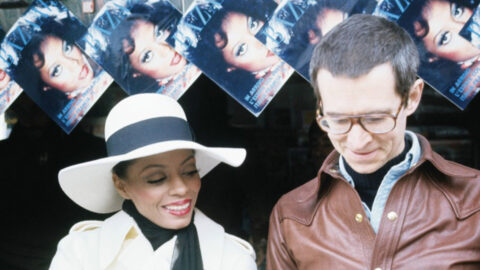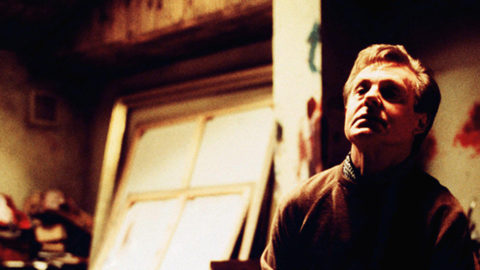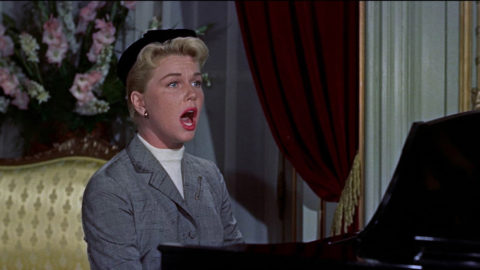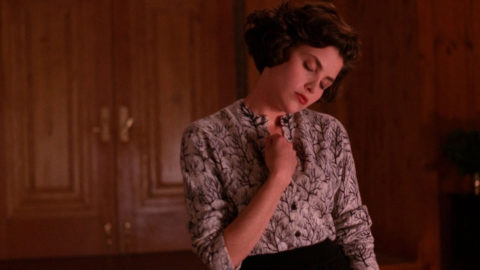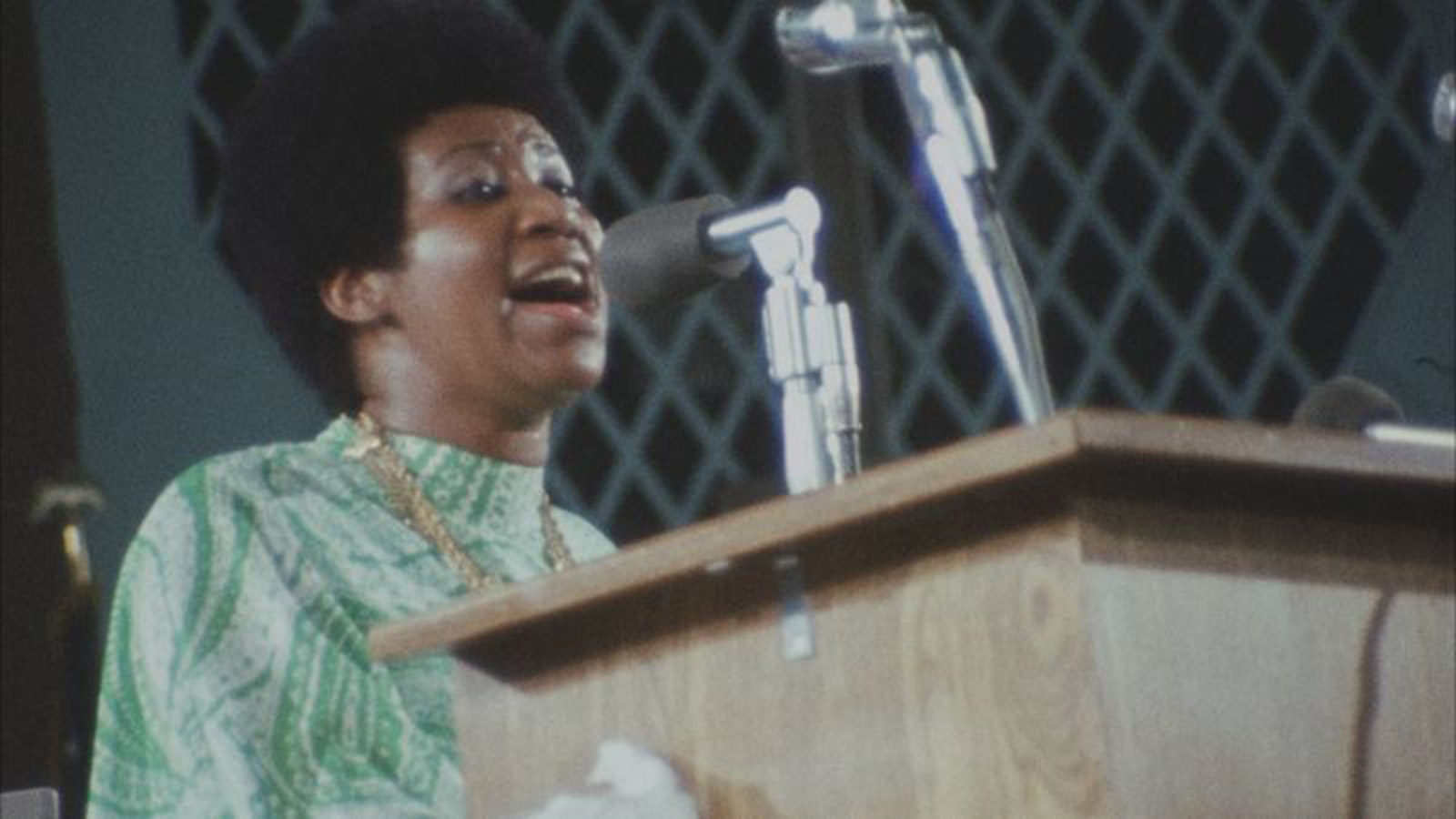
Climbing Higher Mountains
Unless you were alive in the 1960s and ’70s,you probably haven’t spent much time with young Aretha Franklin as a screen presence, looking fly in the bouffants and afros of her peak stardom, sounding like the Holy Ghost touching down in your living room. One of the inevitabilities of true pop longevity is that the artist’s image—no matter how bolstered by her glory days—is constantly made subject to the unkindest revisions. And so it was that the miraculousness of Aretha’s first decade of live television performances gave way to an absurdly protracted lioness-in-winter phase that elevated her at certain points and cheapened her at others. Starting in the ’80s, she repeatedly played a caricature of herself in commercials for Nintendo, Pepsi, and Pizza Hut, and by the turn of the millennium, hall-of-fame status had turned her into an emblem of baby-boomer nostalgia. What younger generations know of Aretha’s life in front of the camera invariably centers on her last decades, when each new TV appearance was a promise of meme-able poses (wig detached, fur to the floor) and equally melodramatic reaction shots (Barack Obama shedding a tear during her 2015 Kennedy Center rendition of “Natural Woman”).
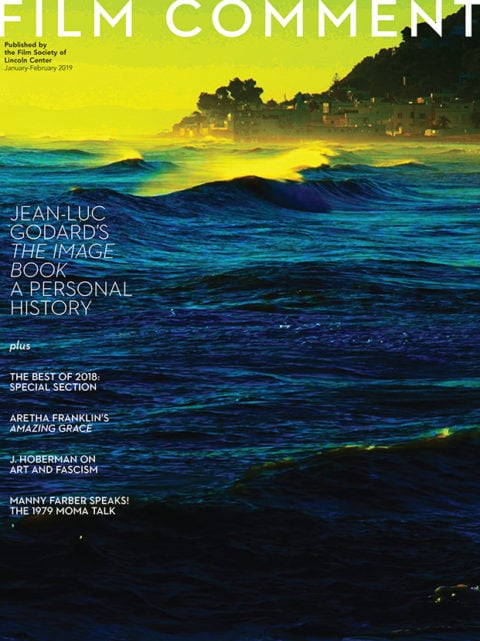
And yet, whether capturing the highs or the lows of a very long career, moving images of Aretha remain a comforting form of corroboration, reassurance that her voice—that most otherworldly of sounds—was indeed flesh-and-blood real. It’s no surprise then that, in the wake of her death last August, YouTube has become the best place for fans to satisfy their longing—to bring her closer, and to retrieve the raw intensity that, for much of the general public, had become a distant memory. There she is tearing it up in the studio, at the Grammys, on tour in Europe, on Soul Train. There she is on stage with Ray Charles, with Sarah Vaughan, with James Brown. And, most devastatingly, there she is in 1968, only a year into her landmark marathon of hits for Atlantic Records, at Martin Luther King’s homegoing. The song is the Thomas A. Dorsey classic “Precious Lord, Take My Hand,” and she sings it as a languid dirge, now and then steeling herself enough to launch a few blisteringly high-pitched wails into the stratosphere. Being able to see the effort on her face at the same time that we hear it in her choked-up voice gives her an eerie aliveness that long-term fame so often denies pop stars. Here she’s no longer some vague angelic eminence—the woman of whom Carmen McRae said “She doesn’t sing, she flies”—but a tangible presence, someone navigating her way through a perilous vocal act.
It’s impossible not to think of that video—perhaps the most morbidly revealing of all Aretha documents—while watching Amazing Grace, a newly released film that chronicles a historic two-evening set she performed in 1972 at the New Temple Missionary Baptist Church in Watts, Los Angeles. Like the footage from King’s funeral, this extraordinary movie gives us access to the woman behind the microphone while at the same time radiating a ghostly effect that’s impossible to shake. Some of that hauntedness has to do with the feeling that we really shouldn’t be watching this footage in the first place. There’s something improper in its intimacy, in the camera’s need to cling so tightly to Her Highness’s face as it brightens and darkens with every imaginable emotion. Aretha’s locked-down position behind a podium (and, for two songs in Amazing Grace, behind a piano) only serves to emphasize how far we are from the precincts of commercial pop, her confinement conveying a solemnity we must make ourselves worthy of. There’s also the sanctity and insularity of the church setting itself, which renders those of us who are neither black nor Baptist (not to mention Mick Jagger and Charlie Watts, who don’t exactly blend in with the Amazing Grace audience) outsiders looking in. Untethered from industry convention, these performances accentuate the black consciousness at the heart of Aretha’s power—the “blues impulse” that Amiri Baraka, tracing the roots of African-American music, once called “an expression of the culture at its most unself- (therefore showing the larger consciousness of a one self, immune to bullshit) conscious.”
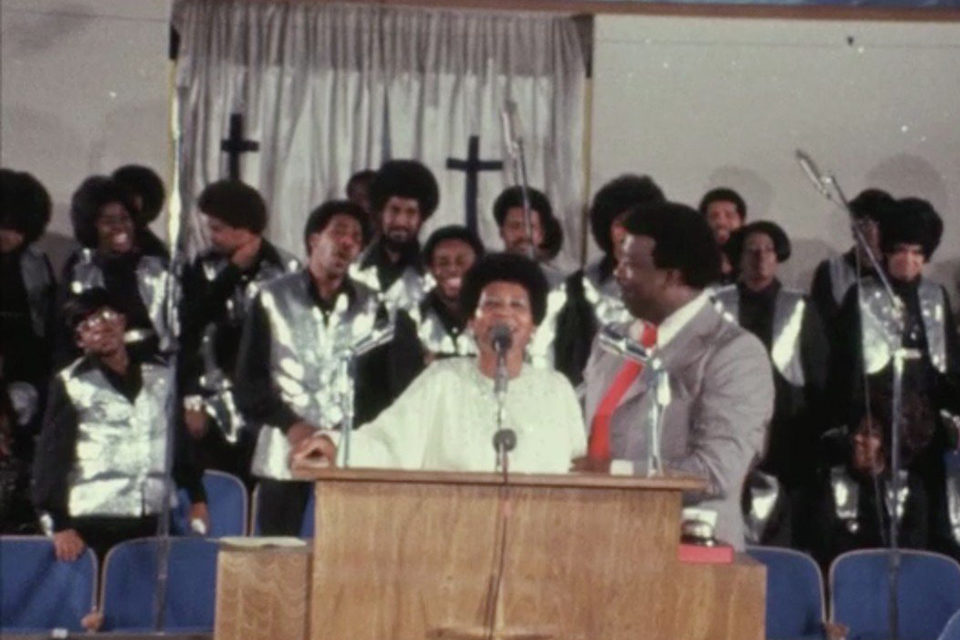
The sense that we’re watching something deeply private is augmented by the fact that, for nearly half a century, no one could say whether Amazing Grace would even see the light of day. This interminable limbo turned it into one of the most sought-after holy grails in American music. Shot by Sydney Pollack, who in 1972 was mainly known for his success with They Shoot Horses, Don’t They? and was getting ready to put out Jeremiah Johnson later that year, the footage was slated to be cut into a feature and released in a double bill with (believe it or not) Super Fly. But according to legend, Pollack, unaccustomed to working with live music, hadn’t used a clapperboard, making the picture and sound all but impossible to sync. The audio became the basis for an album of the same name—which remains the best-selling black gospel record of all time and one of the artistic highlights of Aretha’s career—while the film project ended up getting shelved. Years later, former Atlantic A&R man Alan Elliott persuaded the storied company chief Jerry Wexler to let him work on getting the movie released, but after restoration and editing were finished, it was Aretha’s turn to throw in a wrench of her own. Up until her death, she blocked Amazing Grace from being screened, for reasons we can only guess.
This backstory adds a hint of supernatural intrigue to what is, quite naturally, a spiritually explosive experience. No matter how accessible it’s about to become, Amazing Grace will always have arrived in the world first as a phantom movie. Fittingly, gasps and hollers were audible throughout the duration of its New York premiere, from an audience of fans who must have been at least as familiar with the album as I was. It’s hard to think of another instance in the annals of “lost cinema” where one component of a film is already so well known that, in encountering the resurrected artifact, we’re simply seeing one piece of a puzzle lock in with another that has long since been memorized by heart. Amazing Grace is also a singular entry to the concert-doc canon, which has long privileged depictions of countercultural happenings, the ensemble energy of (mostly white) bands or multi-act lineups, and venues far vaster than the surprisingly intimate New Temple Church (see Festival, Gimme Shelter, and Woodstock). As rich as that canon is, there’s also never been another performance film in which the on-screen audience seems just as aware of the event’s monumentality as the contemporary viewer is able to be in hindsight. Past and present meet in the light of this one certainty.
Of course, at the heart of it all, there’s Aretha’s certainty too. Almost five years after her pop breakthrough with “Respect,” the singer was evolving both personally and professionally. In the late 1960s, she’d rid herself of an abusive husband and was subsequently inspired to embrace a more explicit Afrocentricity in both her music and her fashion sense (her second 1972 milestone, Young, Gifted and Black, was right around the corner). She’d even stirred some controversy by supporting the incarcerated Angela Davis. At the same time that she was putting herself on the front lines of the civil rights struggle, she had aced a much-publicized three-night engagement at the Fillmore West in 1971, which fully endeared her to the predominantly white hippie audience.
Having solidified herself as a multi-genre icon by conquering soul, blues, and jazz, Aretha sought to make an event of her return to sacred music, which had constituted the main recorded repertoire of her precocious teen years. Throughout Amazing Grace, her reserved, introspective demeanor between numbers bespeaks a knowledge of the extreme effect she can have on listeners. Known throughout her career for being shy and more than a little stern (among the few behind-the-scenes moments in this mostly all-music documentary is a hilarious bit in which she casts some brutal side-eye during rehearsal), Aretha holds the film together with an unnerving concentration and self-possession—a state that her sister Carolyn described to biographer David Ritz as going “off into the zone.” If you’re hoping to see Aretha letting her guard down in any non-musical sense, dream on. She’s an enigma here, delivering none of the wry stage banter or goofy diva antics of her later years. We glimpse her briefly backstage, regal in the shadows and bedecked in gold necklaces, before she glides down the church aisle to the podium, exuding a confidence that seems to attract light. Of all the great live-music performances in cinema, this has to be one of the most gesturally restrained. Standing still in front of the Southern California Community Choir (led with infectious, arm-pumping vigor by a young conductor named Alexander Hamilton), the singer emerges not as entertainer but as thinker. By extension, singing itself takes the spotlight—in a way it never really has in the movies—as a contemplative endeavor, an act of great mental absorption and difficulty.
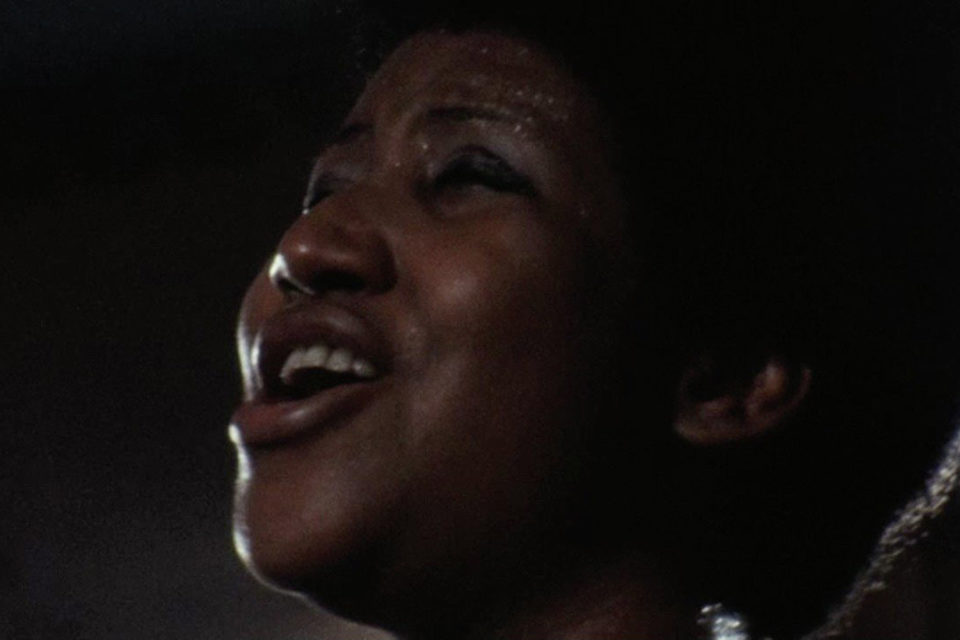
It’s the arrangements of Aretha’s handpicked collaborator, gospel legend James Cleveland—a family friend often credited with being the primary influence on her piano style—that set the scene for this, leaving enough blank space for her to indulge her most experimental impulses. At one point, Cleveland stands behind Aretha, and the two grab each other’s arms while she’s in mid-flight—as if she might otherwise topple over from her own vocal vibrations. The containment of the staging is in constant tension with the irrepressible bounty of what comes out of her mouth. In spiraling riffs and improvisations she re-creates old church standards with the exhaustiveness of a deconstructionist, tearing into notes to reveal the notes behind them.
Aretha lovers tend to talk about her output in terms of varying degrees of freedom. If her stint at Atlantic freed her from the supposed schmaltz of her career-launching Columbia years, then her rafter-shaking approach to gospel would seem to have set her freer still, allowing a break from the constraints of the three-minute radio hit to explore a more “authentic” self. Such a narrative ignores Aretha’s complex musical identity and eclectic tastes (which later in life came to include opera), but it’s convenient enough as a framework for understanding Amazing Grace’s distinctive impact. Aretha does sound ecstatically free here. The impeccably oiled machinery of her accompanists only serves to highlight how audaciously she steps out of time, rhythm, and range. As she did much more sparingly in her tightly constructed hits of the ’60s and ’70s, she delights in stopping a song dead in its tracks, wrapping her voice around a few words, and dangling them agonizingly in the air as Cleveland’s band goes silent: case in point, the four-syllable title phrase that opens her 11-minute version of “Amazing Grace,” which she stretches across a few dozen exquisitely modulated notes. Each of the concert’s most famous setpieces—including the drawn-out call-and-response extravaganzas “Mary, Don’t You Weep” and “Precious Memories”—is designed as a confrontation with her fearsome upper register, the high notes trailing waves of almost unbearable suspense, and some of them squalled out with no regard for vanity. Aretha is the kind of vocalist who can make even non-singers imagine what it’s like to produce a whole universe of sound within one’s own body, and Amazing Grace is the most sustained glimpse we may ever get of the physical mechanics of her magic.
Matchless as Aretha’s voice is, none of these stylistic flourishes are unique to her, and of course the church continues to this day to be the home of world-class vocal mastery and experimentation. Perhaps what’s most moving about Amazing Grace is not the sublime ferocity of the singing—which anyone acquainted with the album is already well aware of—but the palpable sense of history and community that surrounds the proceedings. In a film packed with showstoppers, one segment points to a tradition that extends beyond the glow of any one genius. This scene, one of the film’s last, features Aretha singing “Never Grow Old” while accompanying herself on piano. The singer’s delivery is delicate and lilting at first, but as the hymn gains steam, something in the room begins to snap. Aretha’s father, the legendary Reverend C.L. Franklin, is sitting mere feet away from her in the first row, and so is Clara Ward, the gospel titan who mentored a young Aretha in the 1950s. At one point, Ward leaps straight up out of her seat, arms to the heavens, the forlorn expression on her face echoing what many in the audience are surely thinking: how could a voice this beautiful be bearable? A handkerchief is hurled in the air; one audience member is so overcome that she has to be subdued. Then, as if dizzy from the performance, Aretha takes a seat toward the side of the stage, eyes closed, sweating, only to start singing again, audible even without the aid of a microphone. It’s during these transmissions from “the zone” that Amazing Grace is no longer about a great artist showing us she’s God’s chosen one, but about the overflowing adoration of a people for whom such a crystal-clear fact needs no further proving.
Andrew Chan is web editor at The Criterion Collection. He has been contributing to Film Comment since 2008.



